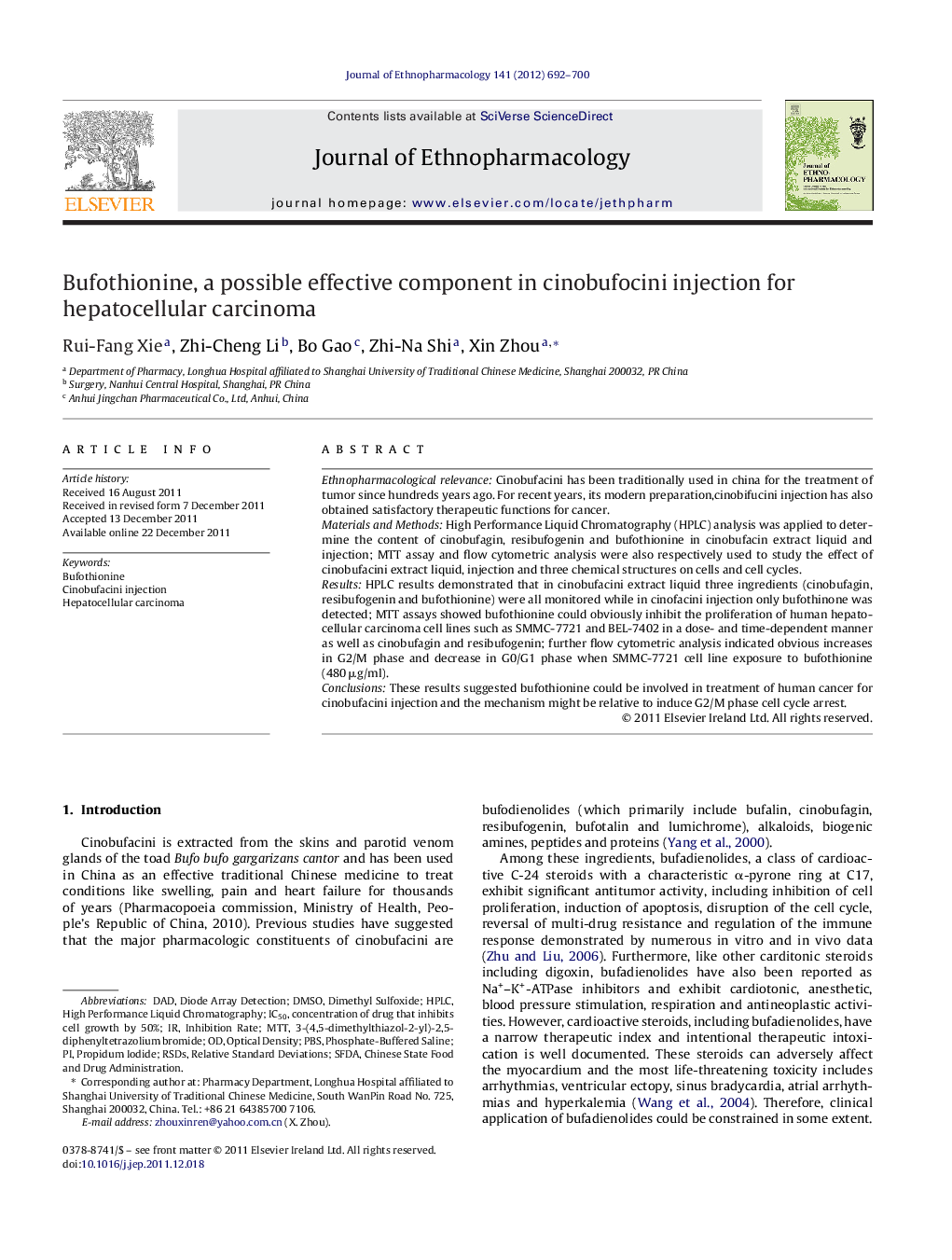| Article ID | Journal | Published Year | Pages | File Type |
|---|---|---|---|---|
| 2545607 | Journal of Ethnopharmacology | 2012 | 9 Pages |
Ethnopharmacological relevanceCinobufacini has been traditionally used in china for the treatment of tumor since hundreds years ago. For recent years, its modern preparation,cinobifucini injection has also obtained satisfactory therapeutic functions for cancer.Materials and MethodsHigh Performance Liquid Chromatography (HPLC) analysis was applied to determine the content of cinobufagin, resibufogenin and bufothionine in cinobufacin extract liquid and injection; MTT assay and flow cytometric analysis were also respectively used to study the effect of cinobufacini extract liquid, injection and three chemical structures on cells and cell cycles.ResultsHPLC results demonstrated that in cinobufacini extract liquid three ingredients (cinobufagin, resibufogenin and bufothionine) were all monitored while in cinofacini injection only bufothinone was detected; MTT assays showed bufothionine could obviously inhibit the proliferation of human hepatocellular carcinoma cell lines such as SMMC-7721 and BEL-7402 in a dose- and time-dependent manner as well as cinobufagin and resibufogenin; further flow cytometric analysis indicated obvious increases in G2/M phase and decrease in G0/G1 phase when SMMC-7721 cell line exposure to bufothionine (480 μg/ml).ConclusionsThese results suggested bufothionine could be involved in treatment of human cancer for cinobufacini injection and the mechanism might be relative to induce G2/M phase cell cycle arrest.
Graphical abstractStructures of bufothionine (A), buffalin (B), cinobufagin (C) and resibufogenin (D).Figure optionsDownload full-size imageDownload high-quality image (90 K)Download as PowerPoint slide
